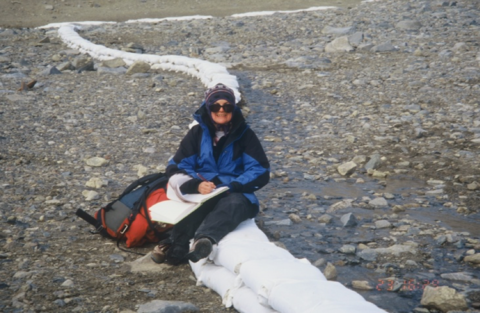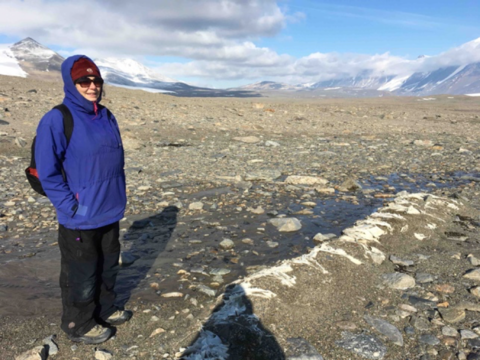


Our long-term “Relict Channel” experiment initiated during MCM I has yielded insights into the controls of flow regime on the microbial mat composition and in-stream nutrient cycling sustains their function as regulating connectivity across the Dry Valley landscapes (McKnight et al., 2007; Stanish et al., 2012, Kohler et al 2018, Wlostkowski et al 2019). The Relict Channel is an intermittent stream that flows in north easterly direction, connecting two larger streams that drain into Lake Fryxell. During the cool period of low flows (1980-1990) a large persistent snowbank and sediment deposits in the headwater reach of Von Guerard Stream restricted flow into the channel. Examination of aerial photography and fine aeolian deposits on the streambed indicated that the channel had been dormant for several decades. With the initial objective of studying colonization of the channel by microbial mats, the channel was experimentally reactivated in 1995 by constructing a sandbag wall to divert water from Von Guerard Stream into the channel (Fig. 33). Unexpectedly, within the first 10 days the arrival of flow had revived microbial mats that had been freeze-dried in the channel (McKnight et al., 2007). Over the next several years, study of the mats at 9 sites spaced at 50-00 m intervals downstream showed that the mats began growing rapidly with the progressive arrival of the nutrient pulse from flushing of the streambed (McKnight et al., 2007). The diatom communities in the Relict Channel mats were less diverse in the first year, but then attained the typical diversity of mats in regularly flowing streams with a community dominated by taxa common in Von Guerard Stream (Stanish et al., 2012).
During the flood event of 2001/02, the snowbank and sediments upstream in Von Guerard Stream were removed, allowing flow to come into the Relict Channel from a point above the sandbag wall. The pulse of sediments from this event covered the mats but was dispersed over subsequent moderate flow years (Fig. 34). Since the flood event, we have regularly sampled the closely spaced sites in the Relict Channel and taken advantage of the known hydrologic history of Relict Channel to study nutrient spiraling in the streams (Kohler et al 2017) and hydrologic controls on the longitudinal patterns in diatom community composition (Wlostkowski et al 2019). For the PDE experiment, we will similarly rely on the Relict Channel as well understood stream reach for evaluation of the experimental study of the effects of sediment release due to permafrost degradation in the adjacent parallel reach (the PDE experiment).
